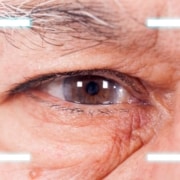What’s the difference between Botox and Dysport for wrinkle treatment?
Botox is a household name and consistently the most popular non-surgical cosmetic treatment around. But what about Dysport, which is often compared to Botox. Here, we break down where the cosmetic injections are similar and how they differ.
- Botox and Dysport injections are both made from the bacterium Clostridium botulinum.
- Both are considered safe, non-surgical ways to temporarily reduce fine lines and wrinkles.
- Both cosmetic injections work on dynamic wrinkles, which are wrinkles that form over a contracting muscle.
- Dysport is FDA-approved for treating moderate to severe glabellar wrinkles, which are the wrinkles between your eyebrows. Also known as “11 lines,” they are especially noticeable when someone frowns. Dysport isn’t recommended for mild glabellar lines.
- Botox is FDA-approved for treating glabellar lines, forehead lines and crow’s feet around the eyes.
- Both Botox and Dysport treatments are done in about 15 minutes or less in your doctor’s office.
- Both wrinkle treatments result in little to no recovery time. You can return to your regular activities after you leave the doctor’s office.
- Patients may experience temporary side effects, including slight pain, soreness, bruising, numbness or headaches. This applies to both Botox and Dysport.
- You will start to see results within a few days after Botox or Dysport. Full results appear in 1-2 weeks, and results dissipate after about four months on average. You’ll want to schedule follow-up appointments to get additional treatments to maintain results.
- Dysport is less expensive than Botox on average, and insurance doesn’t cover either type of cosmetic injection.
Cosmetic injectables are great ways to temporarily turn back the hands of time on your face and help you achieve a rejuvenated appearance without having to go under the knife or endure a lengthy recovery. If you are interested in learning more about Botox, Dysport or cosmetic fillers, set up a consultation by calling Maehara Eye Surgery & Laser at 808.955.3937.










